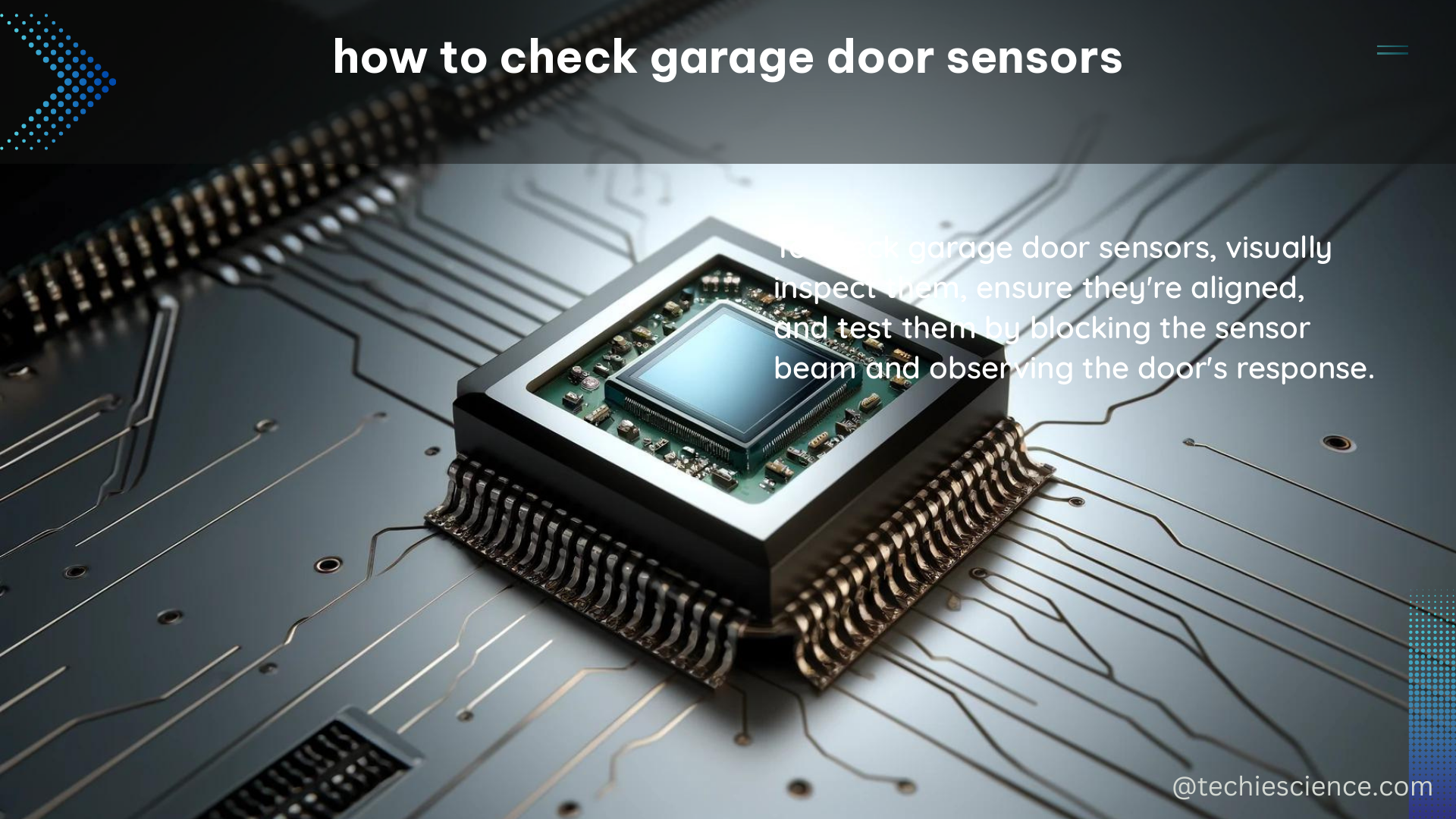Garage door sensors are a critical safety feature that prevent accidents and injuries by detecting obstructions in the door’s path. Ensuring these sensors are functioning correctly is essential for the safe and reliable operation of your garage door. In this comprehensive guide, we’ll walk you through the step-by-step process of checking your garage door sensors, providing you with the technical details and DIY instructions to keep your system running smoothly.
Understanding Garage Door Sensors
Garage door sensors are typically equipped on either side of the door, creating an invisible infrared beam that spans the width of the opening. These sensors are designed to detect the presence of objects, people, or animals in the door’s path, triggering the automatic reverse mechanism to prevent the door from closing and causing harm.
The sensors are typically positioned no more than 6 inches from the ground, ensuring they can effectively detect low-lying obstacles. They operate on a simple principle: when the infrared beam is broken, the sensors transmit a signal to the garage door opener, instructing it to reverse the door’s direction.
Identifying Sensor Issues

One of the most common signs that your garage door sensors may not be functioning correctly is if the door is closing on objects. This can be a dangerous situation, as the sensors are designed to prevent the door from closing if an obstruction is detected.
Another telltale sign of sensor issues is if the sensor lights are blinking red. This indicates that the sensors are misaligned, which can be caused by a problem with the mounting bracket or a circuit board issue that may require professional assistance.
Dirty sensor lenses can also impair the sensors’ ability to detect objects in the door’s path. Over time, dust, debris, and environmental factors can accumulate on the lenses, reducing their sensitivity and leading to potential malfunctions.
Damaged wires can also affect the sensors’ functionality. Frequent use, pests, and adverse weather conditions can cause wear and tear on the wires, leading to connectivity issues and difficulty closing the garage door properly.
Testing the Sensors
To test the functionality of your garage door sensors, follow these steps:
- Place an ordinary object, such as a box or a piece of wood, in the path of the sensors while the door is closing.
- Initiate the closing process using your remote control or wall-mounted button.
- If the sensors are working correctly, the door should reverse and move back up when it encounters the obstruction.
- If the door continues to close or seems to stutter before reversing, there may be an issue with the sensors.
You can also test the sensors by placing an object in front of one of the photo eyes and initiating the closing process. If the sensors are functioning correctly, they should transmit a signal to the opener, activating the auto-reverse mechanism and causing the door to change direction.
Resetting the Sensors
If the sensors are not working correctly, you can attempt to reset them by reprogramming the garage door opener. The resetting process on a newer model typically involves pressing a button labeled “Learn” or “Home.” However, it’s always best to consult your owner’s manual for specific step-by-step instructions, as the process may vary depending on the make and model of your garage door opener.
Maintenance and Cleaning
Regular maintenance and cleaning of your garage door sensors can help prevent issues and ensure their continued reliable operation. Here are some tips:
- Clean the sensor lenses regularly using a soft, lint-free cloth to remove any dirt, dust, or debris that may have accumulated.
- Inspect the wires for any signs of damage, such as fraying, cuts, or loose connections, and replace them if necessary.
- Check the sensor brackets to ensure they are securely mounted and properly aligned, as any shifts in position can affect the sensors’ functionality.
- Consider scheduling periodic professional inspections to identify and address any potential issues before they become more serious problems.
By following these comprehensive steps and maintaining your garage door sensors, you can ensure the safe and reliable operation of your garage door, protecting your family, pets, and property from potential accidents or injuries.
References:
- How to Test Garage Door Sensors
- Troubleshooting Garage Door Sensors
- How Do You Test a Garage Door Sensor?
- Testing Garage Door Sensors
- How to Test Garage Door Sensors

The lambdageeks.com Core SME Team is a group of experienced subject matter experts from diverse scientific and technical fields including Physics, Chemistry, Technology,Electronics & Electrical Engineering, Automotive, Mechanical Engineering. Our team collaborates to create high-quality, well-researched articles on a wide range of science and technology topics for the lambdageeks.com website.
All Our Senior SME are having more than 7 Years of experience in the respective fields . They are either Working Industry Professionals or assocaited With different Universities. Refer Our Authors Page to get to know About our Core SMEs.